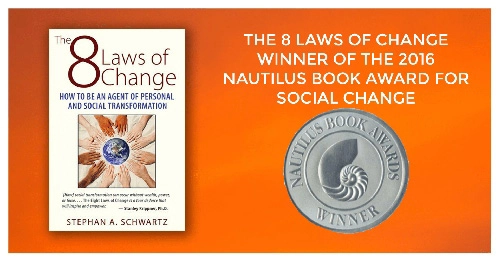Stephan: Anti-Semitism, like Anti-Islamic views, or racism, are unreasoning responses, expressions of fear of the "other" that never die. But culture can play a huge role. Note particularly the differences between countries.
NEW YORK — Anti-Semitism remains prevalent around the world with one in four adults surveyed in a new international study expressing anti-Jewish sentiment, according to a new study released Tuesday by the Anti-Defamation League.
The ADL Global 100 Index found someone to be anti-Semitic if they answered “probably” or “definitely” true to six or more of 11 stereotypes about Jews offered on the survey.
The survey, which the ADL called “the broadest survey of anti-Jewish attitudes ever conducted,” found the lowest level of anti-Semitism in Laos, with just 0.2 percent of the adult population expressing such views. The highest level of anti-Semitism was found in the Palestinian territories of West Bank and Gaza at 93 percent.
Greece was the most anti-Semitic country in Western Europe, with 69 percent of the adults surveyed expressing such opinions and Sweden, with four percent, was the least. In the United States, nine percent of adults were found to harbor anti-Semitic views.
“Our findings are sobering but sadly not surprising,” said ADL National Director Abraham H. Foxman. “We can now identify hotspots, as well as countries and regions of the world where hatred of Jews is virtually non-existent.”
Foxman said findings about Greece had already led to an invitation from […]
No Comments
Stephan: Unfortunately I cannot do photos on SR (it has to do with the programming) But I want you to click through on this and look at these photos. They are jaw dropping, and make the point about what sea rise means better than any map.
Maps are one way to understand what collapse of West Antarctic glaciers could eventually mean. Photos show it another way.
In 2013, Climate Central shared some of its sea level rise mapping data with artist Nickolay Lamm so that he could develop photorealistic images of U.S. city scenes under different future scenarios. One scenario was 12 feet of sea level rise – right in the middle of the range now predicted due to the collapse of key Antarctic glaciers under way. Here is what some classic American city scenes would look like today with that much extra ocean.
No Comments
Wednesday, May 14th, 2014
ALEXANDER BURNS and ANDREW RESTUCCIA, - Politico
Stephan: I think this is a pretty good assessment of the central question in its headline: Who benefits? Who do you think?
In my view all efforts should now be turned to the transition out of the carbon era. It will take time, and yes, natural gas will play a role for a while. But the entire energy emphasis should be on non-carbon energy. Fracking, Arctic drilling and the rest should cease. Will it happen? I doubt it very much. We are going to have to suffer very severely before the oligarchs are over-turned.
Keystone XL isn’t pumping oil yet – and may never be – but in the Washington, D.C., political industry it’s already a gusher.
The TransCanada pipeline has been stuck in limbo for over half a decade now; last month, President Barack Obama again postponed a decision on the project, likely until after the 2014 elections.
Yet in just a few years, the political debate over Keystone has exploded into an entire sector of the Washington influence economy. Funded by multibillion-dollar oil companies, labor unions and ultrarich environmentalists, the fight has filtered into every crack and crevice of the nation’s capital – all for a project some advocates on both sides privately concede wouldn’t be an environmental or economic game-changer.
From advertisements blanketing Metro stops near Capitol Hill and the State Department to TV commercials saturating the Sunday morning talk shows, to print and digital promos in this publication and others, Keystone has been virtually omnipresent. Well over 100 lobbyists have registered to lobby the issue. Top consultants from Obama’s campaigns have signed up on both sides. The pro-pipeline American Petroleum Institute holds regular war councils to plot strategy and has shelled out millions promoting the project; just this week, API spent more than […]
No Comments
Wednesday, May 14th, 2014
CHRIS MOONEY, - Mother Jones
Stephan: Here is the longer term assessment. This water issue is going to become profound very quickly. Managing water, cooperating with water is going to become a central function of government at every level.
Last week, a much-discussed new paper in the journal Nature seemed to suggest to some that we needn’t worry too much about the melting of Greenland, the mile-thick mass of ice at the top of the globe. The research found that the Greenland ice sheet seems to have survived a previous warm period in Earth’s history-the Eemian period, some 126,000 years ago-without vanishing (although it did melt considerably).
But Ohio State University glaciologist Jason Box isn’t buying it.
At Monday’s Climate Desk Live briefing in Washington, DC, Box, who has visited Greenland 23 times to track its changing climate, explained that we’ve already pushed atmospheric carbon dioxide 40 percent beyond Eemian levels. What’s more, levels of atmospheric methane are a dramatic 240 percent higher-both with no signs of stopping. “There is no analogue for that in the ice record,” Box said.
And that’s not all. The present mass scale human burning of trees and vegetation for clearing land and building fires, plus our pumping of aerosols into the atmosphere from human pollution, weren’t happening during the Eemian. These human activities are darkening Greenland’s icy surface, and weakening its ability to bounce incoming sunlight back away from the planet. Instead, more light is absorbed, […]
No Comments
Wednesday, May 14th, 2014
EMILY ATKIN, - Think Progress
Stephan: This is a very important article because it gives us a sense of proportion and frequency concerning oil spills. The data should appall you.
Despite missing data from one of the largest natural gas-producing states in the nation, an EnergyWire analysis released Monday found that the U.S. oil and gas industry was responsible for at least 7,662 spills, blowouts, and leaks in 2013 – an average of about 20 spills per day.
The figure represents an 18 percent increase in the number of spills EnergyWire counted in 2012, when 6,546 accidents were tallied. Though most of the spills were small, their combined volume added up to more than 26 million gallons of oil, gas, hydraulic fracturing fluid, and other substances, the report said.
The increase in drilling accidents since 2012 is particularly jarring because the United States has not actually seen an increase in drilling sites. According to January data from the American Petroleum institute, the total number of wells in the country in 2013 stayed largely the same, actually decreasing one percent since 2012.
The decrease, according to API, is because the U.S. drilled substantially less gas wells in 2013, but increased its oil drilling – a trend seen most notably in Montana. There, spills were up 48 percent, largely in line with the 42 percent increase in rig count figures. In North Dakota’s booming Bakken […]
No Comments









